Introduction
A ROAS Calculator is a game-changer for businesses and marketers looking to understand the effectiveness of their advertising efforts.
Instead of guessing whether your ads are actually making money, a ROAS calculator gives you a clear picture of how much revenue you’re earning for every dollar spent.
If you’re investing in digital ads, knowing how to use a ROAS calculator can help you fine-tune your campaigns, adjust budgets, and ultimately increase profitability.
In this guide, we’ll break down everything you need to know about using a ROAS calculator, interpreting your results, and applying strategies to improve your return on ad spend.
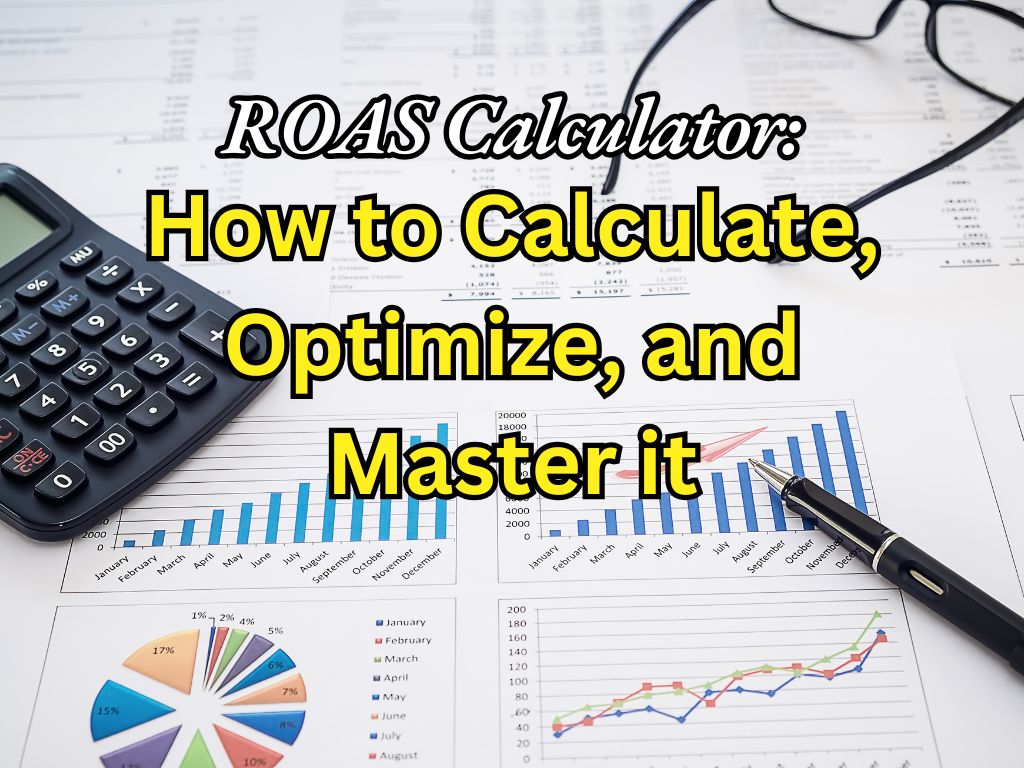
Return on Ad Spend (ROAS)
Return on Ad Spend (ROAS) is one of the most important metrics in digital marketing.
It tells you whether your advertising dollars are working hard or hardly working. Simply put, ROAS measures how much revenue you generate for every dollar spent on ads.
If you’re running ads, understanding ROAS can help you fine-tune your marketing strategy, optimize budget allocation, and increase profitability.
But knowing how to calculate it is just the beginning. In this guide, we’ll dive deep into ROAS calculation, optimization, and mastery to maximize your ad spend.
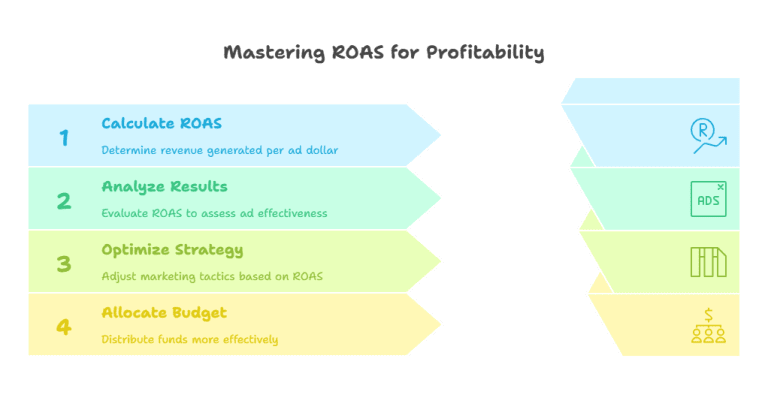
What is ROAS?
ROAS is a key performance metric that helps businesses determine how efficiently they are spending on ads. The formula is simple:
ROAS = Revenue from Ads / Cost of Ads
For example, if you spend $500 on ads and generate $2,500 in revenue, your ROAS is:
$2,500 / $500 = 5
A ROAS of 5 means that for every dollar spent on ads, you earn $5 in revenue. Tracking ROAS helps businesses identify high-performing campaigns and optimize underperforming ones.
Is ROAS the Same as ROI?
Many marketers confuse ROAS with Return on Investment (ROI).
While both measure profitability, ROAS only focuses on ad spend, while ROI considers all business expenses like product costs, overhead, and marketing expenses. To calculate ROI:
ROI = (Revenue – Total Costs) / Total Costs
A high ROAS doesn’t always mean high profitability other expenses like the cost of goods sold (COGS) must be factored in. Understanding both ROAS and ROI gives you a more complete view of your financial performance.
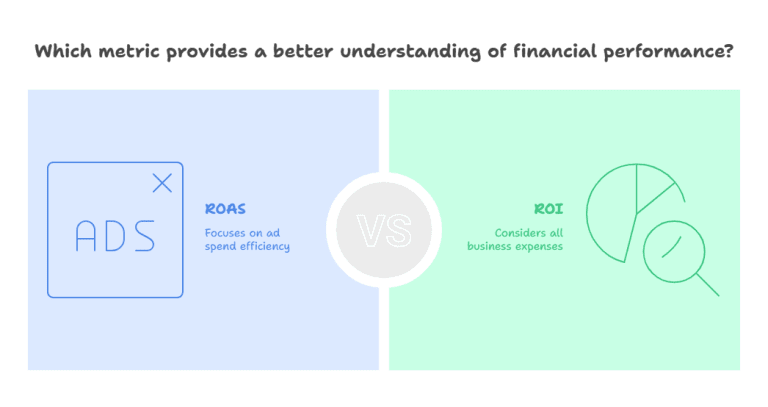
ROAS Calculator
Use this simple ROAS Calculator to instantly measure the effectiveness of your ad campaigns.
How to Use the ROAS Calculator
Using the ROAS Calculator is simple and takes just a few seconds. Follow these steps to get accurate insights into your advertising performance:
- Enter Your Ad Spend – Input the total amount you’ve spent on ads within a specific period.
- Enter Your Revenue – Provide the total revenue generated from those ads.
- Click Calculate – The calculator will instantly show your ROAS value.
- Interpret Your Results –
- A ROAS above your break-even point means your ads are profitable.
- A ROAS below your break-even point means you’re spending more than you’re earning, requiring adjustments to your strategy.
By using this calculator regularly, you can track your performance and make data-driven decisions to improve your ad profitability.

What is a Good ROAS?
A “good” ROAS depends on the industry and business model. Here are some general benchmarks:
- E-commerce: A ROAS of 4:1 or higher is typically good.
- Lead Generation: A lower ROAS, such as 2:1, can still be profitable if customer lifetime value (LTV) is high.
- SaaS and Subscription Models: A 3:1 or higher ROAS is a strong target.
- Break-Even ROAS: The minimum ROAS needed to avoid losing money is:
Break-Even ROAS = 1 / Profit Margin
For instance, if your profit margin is 25%, your break-even ROAS is 4.0.
ROAS Examples:
- A ROAS of 2.5: You’re earning 2.5x your ad spend. If your profit margins are low, this may not be sustainable.
- A ROAS of 10: Exceptional performance, you’re making 10x what you spend, often seen in high-margin industries.
- A 100% ROAS: You’re breaking even spending and earning the same amount on ads.
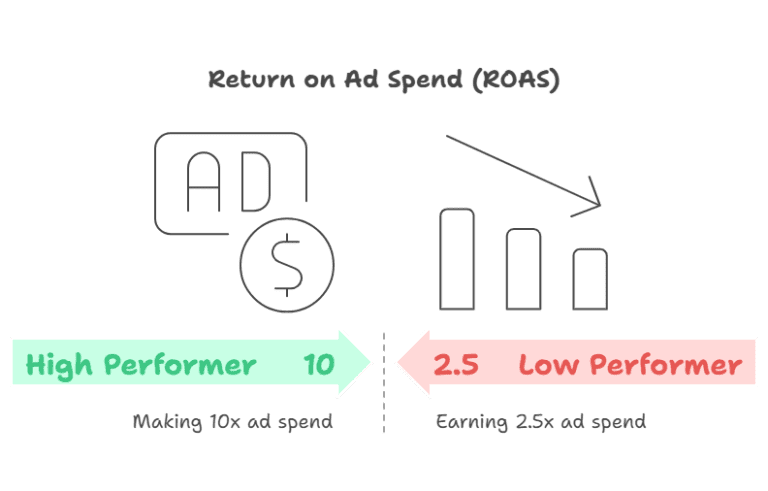
How to Optimize ROAS
If your ROAS isn’t hitting your goals, here are ways to improve it:
1. Improve Ad Targeting
Refine audience demographics, interests, and behaviors to ensure you’re reaching high-intent users who are more likely to convert.
2. Optimize Ad Creatives
Run A/B tests on different headlines, images, and calls-to-action (CTAs) to find what resonates best with your audience.
3. Lower Cost-Per-Click (CPC)
Use better bidding strategies and refine your keywords to bring down CPC, increasing overall ROAS.
4. Increase Average Order Value (AOV)
Offer bundles, discounts on larger purchases, or upsell recommendations to boost revenue per transaction.
5. Optimize Landing Pages
Make sure your landing pages are designed for high conversions with clear messaging and fast load times.
6. Use Retargeting Campaigns
Show ads to people who have already visited your site. Retargeting ads are cheaper and more effective than cold audience ads.
7. Adjust Budget Allocation
Shift ad spend from underperforming campaigns to those delivering higher ROAS. Regularly monitor performance and reallocate budgets accordingly.
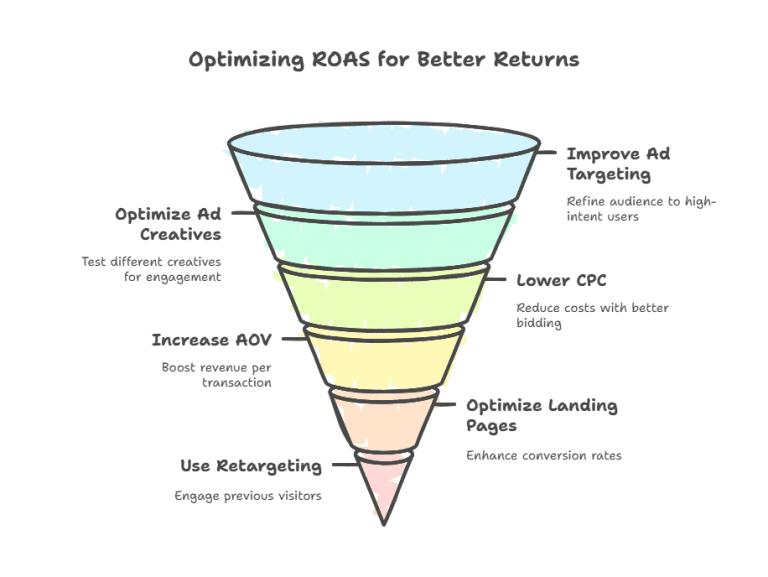
Common Questions About ROAS
What is a Bad ROAS?
A bad ROAS means you’re losing money on ads. If your ROAS is lower than your break-even point, you’re running at a loss.
Does ROAS Include COGS?
No, ROAS only looks at ad spend and revenue. It does not consider costs like product manufacturing, shipping, or overhead.
What is a 200% ROAS?
A 200% ROAS means you’re making twice what you spend on ads. Spending $1,000 and earning $2,000 results in a 200% ROAS.
Trusted Resources for Further Learning
For more insights on ROAS and digital advertising, check out:
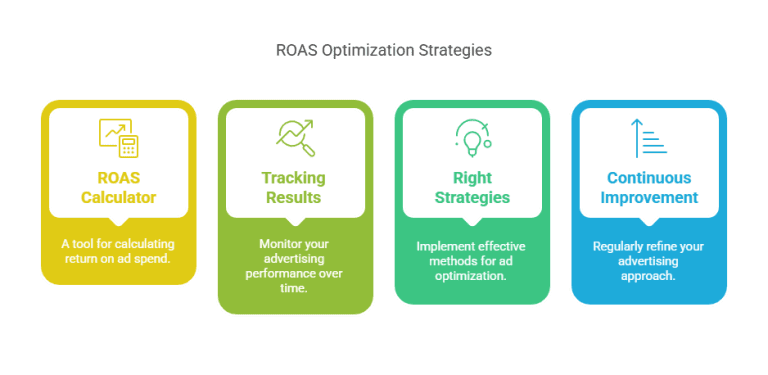
Conclusion
Mastering ROAS is key for businesses looking to maximize their ad spend and profitability.
By using a ROAS Calculator, tracking your results, and applying the right strategies, you can optimize your advertising campaigns for better returns.
Understanding ROAS isn’t just about running ads, it’s about making smart, data-driven decisions that lead to sustainable growth.
Keep testing, refining, and improving, and you’ll see your ROAS climb over time.
Start optimizing today with our ROAS Calculator, and take control of your ad spend!
For more marketing terms go to our Marketing Glossary Page.

1 Comment
Return on Ad Spend: How to Improve it ROAS - Ismel Guerrero. · March 9, 2025 at 2:39 pm
[…] to measure your ROAS instantly? Use our ROAS Calculator to track your ad performance and make data-driven decisions […]